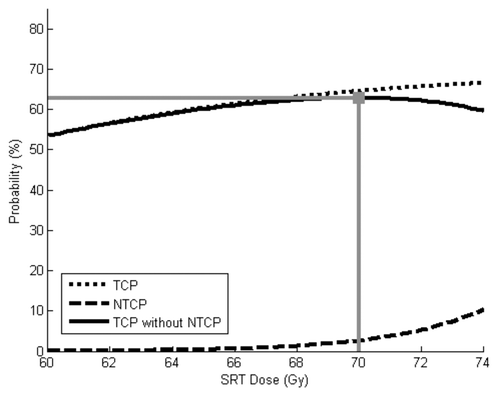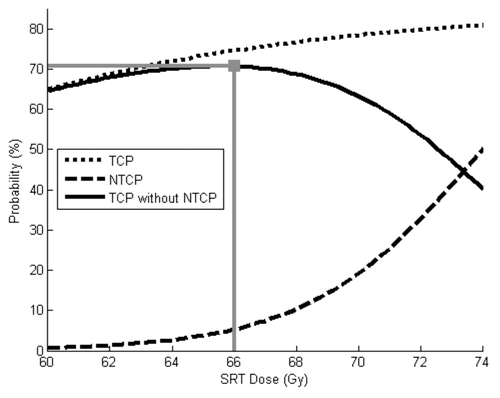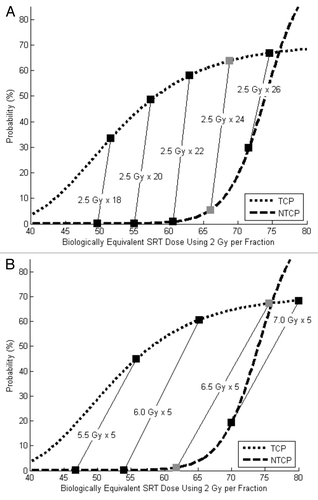Figures & data
Figure 1. TCP and NTCP models using baseline parameters. The optimal SRT dose in this scenario is 66 Gy. This provides a 61% chance of tumor control, 5% chance of severe toxicity and a 58% chance of “success” (tumor control without toxicity).

Figure 2. TCP and NTCP models using baseline parameters, except TCD50 is increased from 74 Gy to 80 Gy. The optimal SRT dose in this scenario is 70 Gy. This provides a 65% chance of tumor control, 3% chance of severe toxicity and a 63% chance of “success.”

Figure 3. TCP and NTCP models using baseline parameters, except K is increased from 0.70 to 0.85. The optimal SRT dose in this scenario is 66 Gy. This provides a 75% chance of tumor control, 5% chance of severe toxicity and a 71% chance of “success.”

Figure 4. (A) TCP and NTCP models using baseline parameters and mildly hypofractionated SRT schedules (2.5 Gy per fraction). The optimal SRT dose in this scenario 60 Gy (gray boxes). This provides a 64% chance of tumor control, a 5% chance of severe toxicity and a 60% chance of “success.” (B) TCP and NTCP models using baseline parameters and 5-fraction SRT schedules. The optimal SRT dose this scenario is 32.5 Gy (6.5 Gy x 5, gray boxes). This provides a 67% chance of tumor control, a 1% chance of severe toxicity and a 66% chance of “success.”
